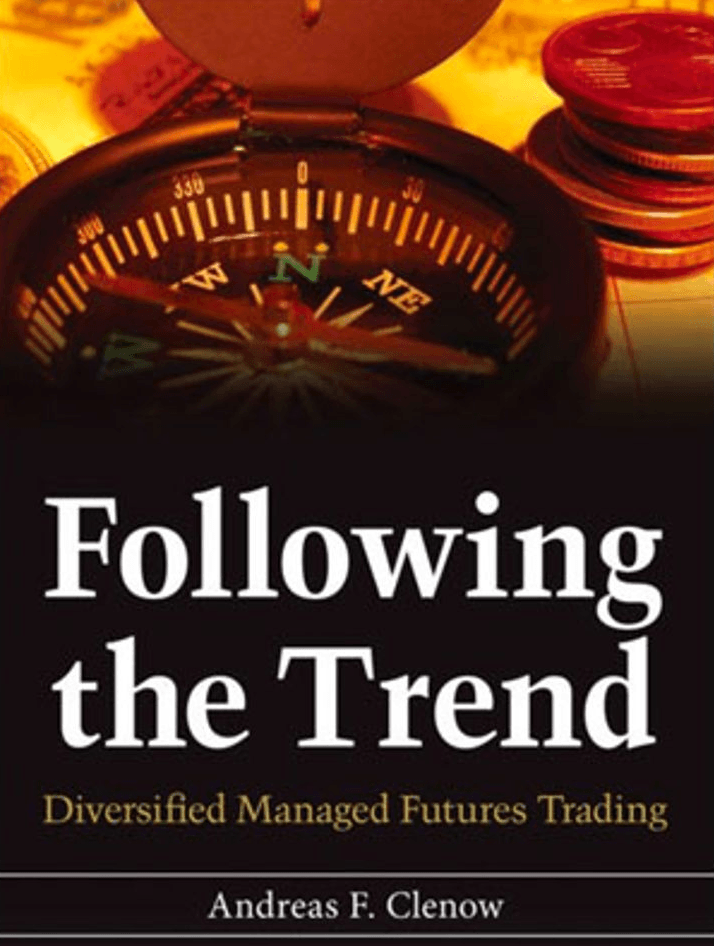
The very concept of trend following means that you will never buy at the bottom and you will never sell at the top. This is not about buying low and selling high, but rather about buying high and selling higher or shorting low and covering lower.
(page 2)
The essence of counter-trend trading lies in buying low and selling high, while the essence of trend trading is buying high and selling even higher.
Future exchanges use so-called mark-to-market accounting that requires that the gains and loses for each day be settled at the end of that day. Gains or losses on the contracts are not allowed to be accumulated from day to day, but are settled in cash at the end of each trading day on your cash accounts. If you are long ten gold contracts and yesterday's closing price of gold was $1650 and today it ended at $1652 and you have a day gain of $2 per ounce. Since each contract represents 100 ounces, you have a total gain of $2000 and this amount will then be credited to your account by the day's end, even if your position remains open.
(page 18)
The important things on trend-following:
1). Diversification: How you choose to diversity is the single most important factor to influence the overall long-term results. Which instruments are included in the universe and the weighting of different sectors will have a massive impact.
2). Position sizing: Finding a way to properly calculate position sizes based on the volatility of each instrument is paramount, but the good news is that this does not have to be overly complicated.
3). Time horizon: You need to decide what length of trends to follow: for example, if you want to be in the 1-2 week trends, 5-8 week trends and so on. At times this will make a substantial difference in performance.
4). Risk level: There will always be a trade-off between risk and return and the higher risk you are willing to take, the more return you should be expecting. Find a level you can be comfortable with.
5). Single or multiple strategy: Although long-term results tend to be similar, running the same strategy on multiple time frames or several similar trend-following strategies at the same time can help to smooth out volatility in the shorter term.
(page 52)
Often books on trend-following spend too much time talking about entry rules while often neglecting the really important aspects of a strategy. In reality, the buy and sell rules are far subordinate in importance to position sizing and diversification. Non-professionals tend to spend an excess of time and energy on the buy and sell rules and neglect the infinitely more important aspects of diversification and risk. For a trend-following strategy, it is quite possible to have flawed entry and exit rules in combination with good diversification and risk rules and still be profitable, but the other way around is a recipe for disaster.
(page 58)
Although far from perfect, the Sortino ratio can be more helpful than Sharpe ratio. The principle for the Sortino ratio is the same as for the Sharpe ratio, but only downside volatility is measured so that a strategy is not punished for moves in the right direction.
(page 67)
What we are looking at here are monthly return correlations; that is, how closely the returns of one strategy are related to another.
(page 68)
The concept of correlation between strategies is quite innovative.
One of the most common and also one of the easier ways to increase the volatility adjusted returns is to trade the same strategy on multiple time frames. To change the core strategy to trade shorter- or longer-term trends with a minimum of modification you could adjust the trend filter settings, the breakout period and/or the stop distance.
(page 250)
Applying the same strategy across different timeframes with the aim of capturing trends at various scales is an approach built upon understanding the patterns of stock price movement across different timeframes. The advantage lies in potentially increasing returns and reducing drawdowns while maintaining the same target risk level.
Another common and often very effective method of smoothing returns of a trend-following futures strategy is simply to add a counter-trend strategy to it. Does that sound like a big contradiction in terms? It may seem odd, but this is something that works very well for some of the best trend-following future managers. This big money is in following the trends and that is where the main action should always be, but by adding a taste of a shorter-term counter strategy you may achieve equal or even higher returns with lower volatility. This type of strategy is usually based on taking the opposite side once a market has made an extreme move in either direction, keeping the stops very tight and taking profits early. Think of the counter strategy as more of a hit-and-run tactic in which you are fighting against the stream, and so once you have a profit you need to take it off the table and wait for the next opportunity. Of the available toolkit for improving a trend-following strategy, adding a counter-trend component is in my view the most effective.
(page 252-253)
Incorporating a counter-trend strategy within a trend-following system not only allows capturing major trends but also helps avoid potential pullbacks. In other words, combining trend trading on larger timeframes with counter-trend trading on shorter timeframes can yield greater returns at the same risk level. However, how can these fundamentally opposite strategies be effectively combined?